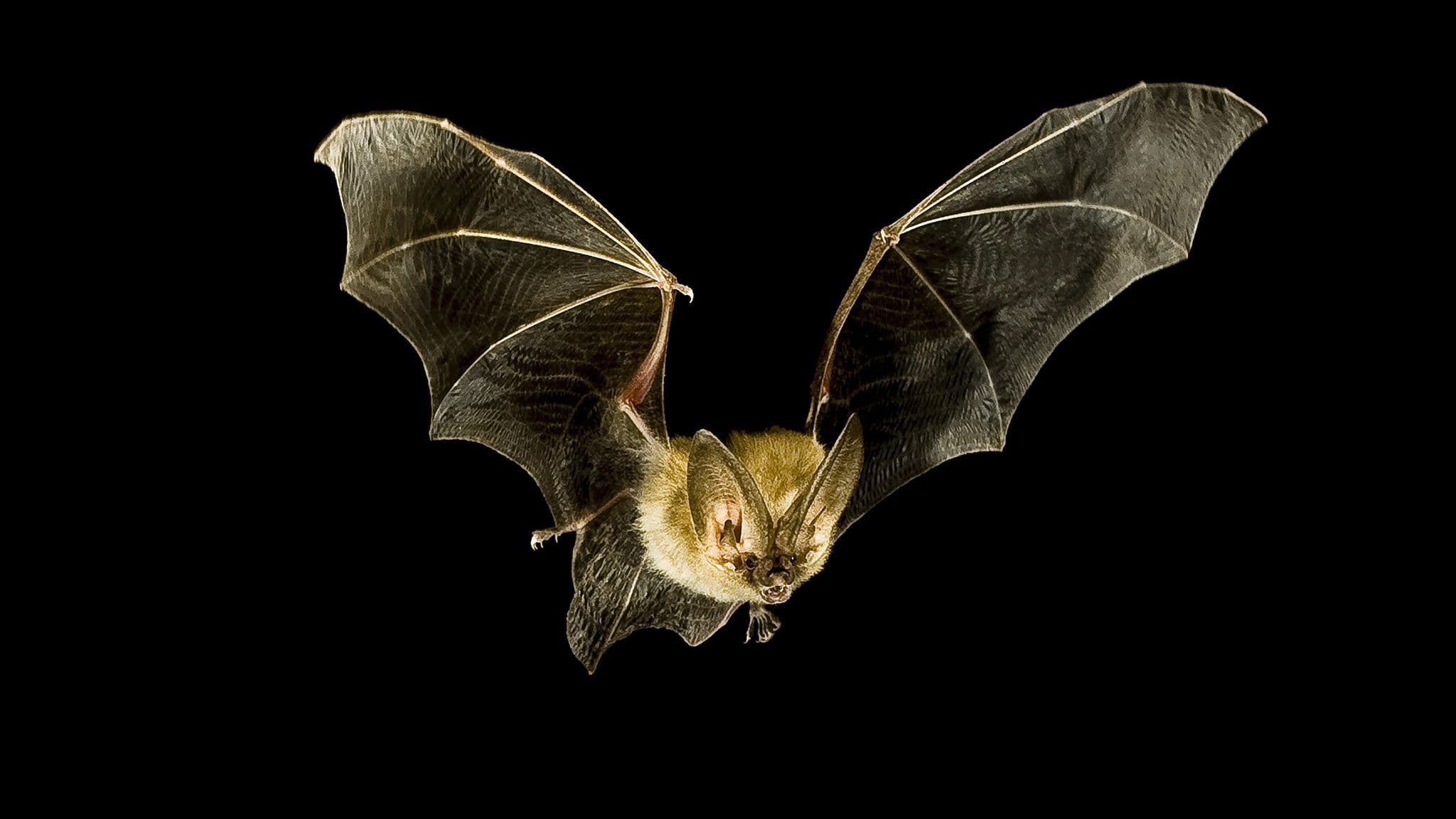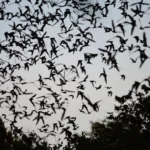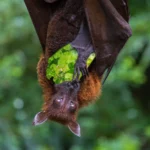When the sun sets and the moon rises, there’s a whole other world stirring in the night sky. And one of the coolest creatures that make their home there are bats. These flying mammals are not only incredible at catching dinner in the dark, but they also have some pretty amazing social lives. They hang out in groups and work together to take care of each other and their young. Let’s dive into their colony life and see what makes them so special.
What is a Group of Bats Called?
Have you ever taken a stroll through nature and spotted a cluster of bats fluttering above? You might have wondered what on earth you could call such a peculiar sight. Well, wonder no more! The collective name for a group of bats depends on the species, but they’re generally referred to as:
- Colony
- Cauldron
- Camp
- Cloud
Yup, you read that right! You could be looking at a whole cauldron bubbling with bats or a cloud drifting through the air. How cool is that?
Why do bats choose to hang out together like this? Well, they’re actually a very social bunch. Living in colonies helps them in a variety of ways:
1. It’s a Party Time! Bats love to chat and bond in their colonies. They use vocalizations to share the latest gossip, like where the best bugs are or who’s looking for a new beau.
2. Safety in Numbers: When predators come knocking, bats have each other’s backs. They take turns keeping an eye out for danger while others rest or hunt. It’s like having a built-in alarm system!
3. Hibernate and Snore: When the weather gets cold, many bats hibernate or enter a sleepy state called torpor. Colonies provide a cozy and warm spot for them to hunker down until warmer days return.
4. Food Quest Time: Bats share intel on food sources within their colonies. They tell each other where the best nectar, fruit, and insects are hiding. It’s like having a free dinner delivery service!
5. Love in the Colony: Colonies are like a bustling dating scene for bats. Male and female bats gather here during mating season to find their perfect match. It’s like a bat version of Tinder!
So, next time you see a group of bats, don’t just pass them by. Marvel at their social skills, their ability to protect each other, their cleverness in finding food, and their love for community. They’re truly fascinating creatures! Besides their adorable appearance, bats are also fascinating creatures with unique characteristics. Want to know what a flock of bats is called?
What is a bat’s lifespan? With all the information available here, you may even uncover what a bat’s diet is, so dive in to quench your curiosity.
Outline exploring various terms used to describe groups of bats, such as “colony,” “swarm,” and “creche,” and examining the specific contexts and circumstances associated with each term.
Imagine a world filled with tiny, flying mammals that hang upside down in caves and buildings. That’s the world of bats, and just like humans, they form different groups for different reasons. Let’s dive into the unique terms used to describe these bat communities and the contexts in which they occur.
Colony: Bats Huddle Up for Safety and Warmth
When we say “colony” in the bat world, we mean a group of these creatures living together in a cozy spot. Think of it like a bat apartment complex. They love to hang out together in caves, trees, or even buildings. But it’s not just for fun; colonies provide protection and warmth, especially during the cold winter months. These colonies can be huge, with some housing thousands of bats!
Swarm: Bats on the Move
Swarms are like temporary parties for bats. They’re not as permanent as colonies and can gather for specific reasons, like finding food or looking for a mate. Imagine millions of bats swirling in the sky during a mating season – talk about a bat rave! Swarms also help bats establish their pecking order, just like your favorite reality TV show.
Creche: Bats as Doting Parents
When it’s time for baby bats to arrive, female bats form special groups called creches. These are like little bat nurseries where mothers can take turns caring for their young ones. Creches are found in snug spots like caves or hollow trees, providing a safe haven for the newborns. The mothers take turns nursing and protecting each other’s babies until they’re ready to fly and feed themselves.
Key Differences: A Batty Breakdown
| Group | Purpose | Size | Duration | Behaviors |
|---|---|---|---|---|
| Colony | Protection, warmth | Varies | Long-term | Cooperative, social |
| Swarm | Mating, feeding | Can be immense | Temporary | Flighty, communicative |
| Creche | Childcare | Small | During birthing and nursing | Nurturing, protective |
So, there you have it, a sneak peek into the fascinating social life of bats. From cozy colonies to energetic swarms and nurturing creches, these terms reveal the diverse ways bats organize themselves to survive and thrive in their unique world.
Outline Investigating the Social Dynamics and Behaviors of Bats Within Groups, Including Communication Methods, Cooperative Hunting Techniques, and the Formation of Social Bonds
As you explore the fascinating realm of bat society, you’ll discover a world teeming with complex behaviors and social structures. These creatures of the night have developed unique ways to communicate, hunt together, and forge unbreakable bonds.
The Secret Language of Bats
Bats have mastered a variety of vocal cues, facial gestures, and body language to convey their thoughts and emotions. Much like us humans, they use “small talk” to keep their colony close-knit. But their most remarkable communication tool is echolocation. This sonar-like ability allows them to see in the dark, track down prey, and coordinate their hunting expeditions.
Cooperative Hunting: A Team Effort
Some bat species have taken teamwork to a whole new level. They work together, using echolocation to pinpoint their prey and execute a synchronized attack. This collaborative approach helps them overcome even the most formidable adversaries. It’s like a miniature air force, working together to secure dinner.
Bat Buddies: The Importance of Social Bonds
Bats aren’t just skilled hunters; they’re also fiercely social creatures. They live in colonies, sharing responsibilities and providing support. From maternity colonies where mothers nurture their young, to grooming partnerships where they keep each other clean, bats have a strong sense of community.
Key Points:
- Bats communicate through a range of vocalizations, body language, and the amazing echolocation ability.
- Cooperative hunting allows them to take down larger prey, showcasing their teamwork and resilience.
- Bats form social bonds that include maternity colonies, grooming partnerships, and information sharing, strengthening their group cohesion.
Remember, bats aren’t just creepy crawlers that avoid the light. They’re intelligent, social animals that have developed unique ways to communicate, hunt, and support each other. As you learn more about their fascinating world, you may just find yourself seeing these nocturnal creatures in a whole new light.
Outline examining the ecological significance of group living in bats, highlighting the advantages it provides for survival, reproduction, and predator avoidance
Key Findings:
- Different bat species vary in the importance of group stability and roost lifespan.
- Social and mating systems studies often focus on specific species and habitats, potentially skewing our understanding of bat colonies.
- The stability of bat colonies and the lifespan of their roosts don’t always go hand in hand.
Ecological Importance of Group Living: A Bat’s Perspective
For bats, hanging out in groups is more than just a social hour – it’s a matter of survival, love, and avoiding getting eaten.
Keeping Predators at Bay
Imagine you’re a bat, tiny and vulnerable. Living in big groups gives you a superpower: the ability to spot predators like hawks or owls from a mile away. Bats use their combined hearing, seeing, and smelling skills to create a radar system that makes it almost impossible for predators to sneak up on them.
Staying Cozy: Temperature Control 101
When it’s cold outside, bats huddle together in their roosts like little furry blankets. By sharing their body heat, they can save energy and stay warm, even in the coldest of nights.
Love is in the Air: Colony Mating
Bat colonies are like singles bars for bats looking for love. Males try to impress the ladies with their best charm, while females have the pick of a crowd. This leads to a higher chance of finding a mate and passing on their genes.
Dinner Time: Group Munching
Bats are social foodies. They share tips on where to find the best bugs and fruits, which means they can spend less time hunting and more time enjoying the meal.
Chatting it Up: Communication Central
Bat colonies are like neighborhood gossip centers. They use a language of squeaks and body language to share info about food, danger, and even potential mates.
Building Bonds: The Batty Social Network
Bats in colonies aren’t just roommates – they’re friends! They groom each other, play together, and help each other out when in need, creating a strong community within their group.
Conclusion
Hanging out in colonies is like having a superhero squad for bats. It helps them survive, reproduce, and avoid becoming someone else’s dinner. Understanding how these colonies work is crucial for protecting these amazing creatures and appreciating their unique social lives.
FAQ
Q1: How do bats differ physically from other mammals and what special abilities do they possess?
A1: Bats are unique among mammals due to their ability to fly. Their forelimbs are modified into wings, enabling them to navigate the night sky with great agility. Additionally, bats possess a sophisticated echolocation system that allows them to sense their surroundings and locate prey in complete darkness.
Q2: What are the different terms used to describe groups of bats?
A2: Groups of bats are often referred to as colonies, swarms, or creches. A colony typically consists of a large number of bats roosting together in a specific location, while a swarm is a temporary gathering of bats for mating or feeding purposes. Creches, on the other hand, are smaller groups of bats comprising mothers and their offspring.
Q3: How do bats communicate and interact within their groups?
A3: Bats use a combination of vocalizations, facial expressions, and body postures to communicate with each other. They form strong social bonds and often engage in cooperative behaviors, such as group decision-making and information sharing.
Q4: What are the advantages of group living for bats?
A4: Group living provides several advantages for bats, including increased protection from predators, improved thermoregulation, and enhanced foraging efficiency. Additionally, it facilitates the exchange of information and social interactions, which are crucial for the survival and well-being of the colony.
Q5: Can you provide examples of specific bat species and their unique group behaviors?
A5: Different bat species exhibit varying social structures and cooperative strategies. For instance, vampire bats form complex social groups with distinct roles and responsibilities, while fruit bats are known for their large, noisy colonies. Horseshoe bats, on the other hand, roost in smaller, more cohesive groups and exhibit high levels of social grooming.
- China II Review: Delicious Food & Speedy Service - April 17, 2025
- Understand Virginia’s Flag: History & Debate - April 17, 2025
- Explore Long Island’s Map: Unique Regions & Insights - April 17, 2025
















